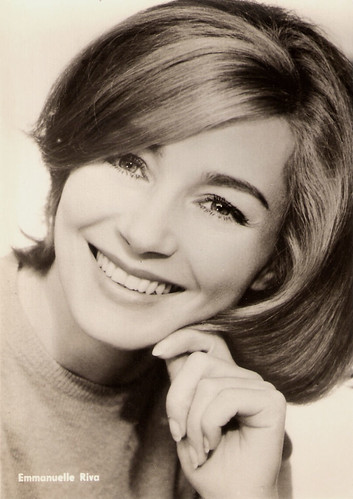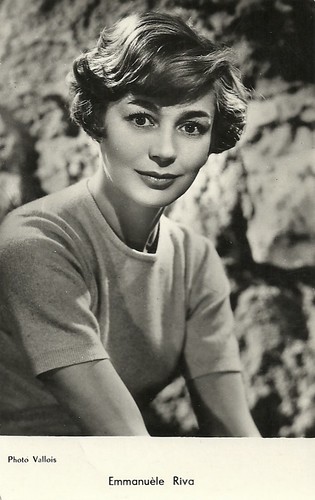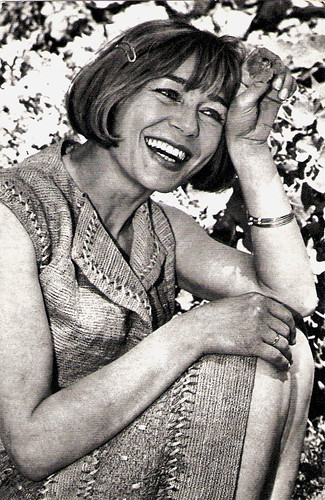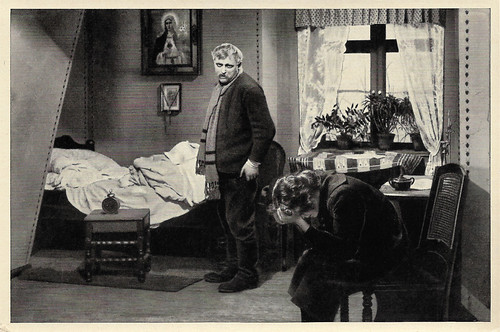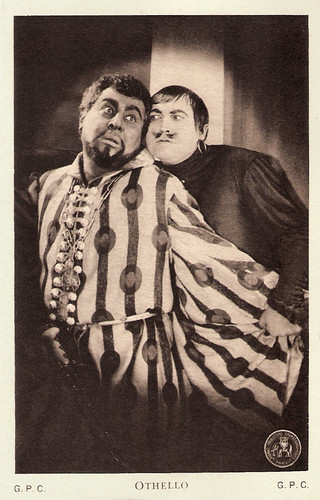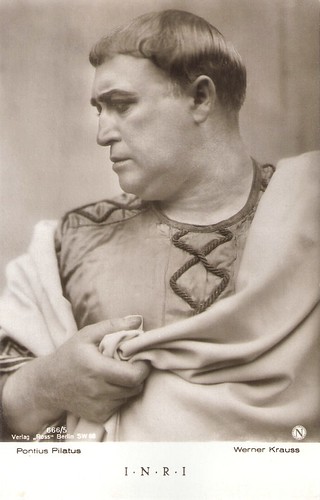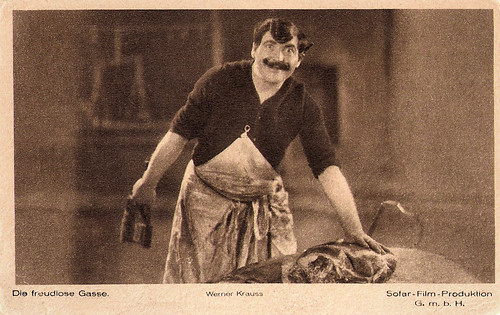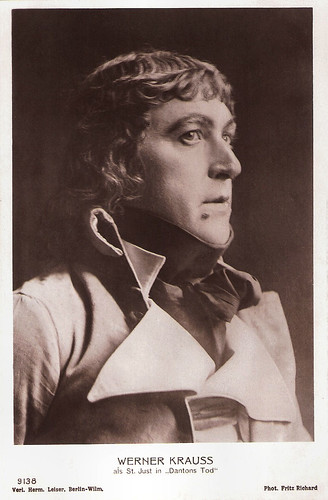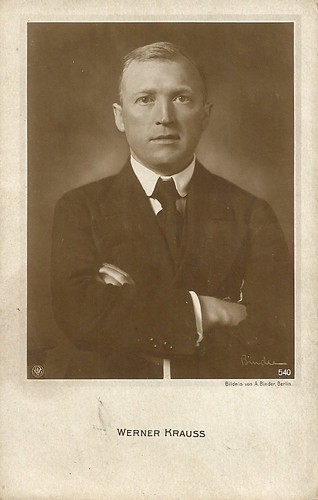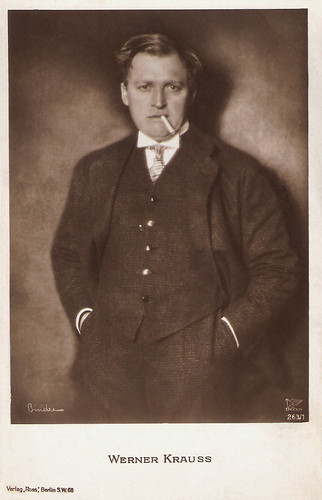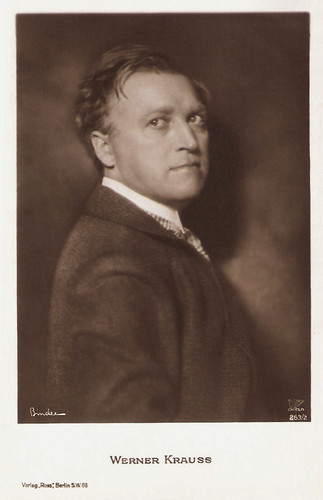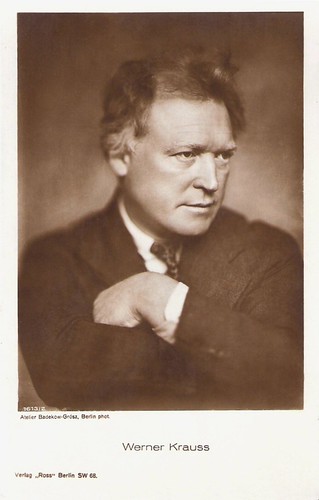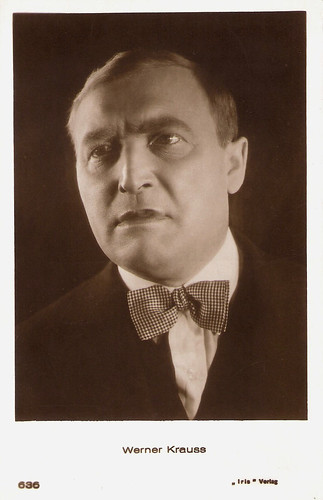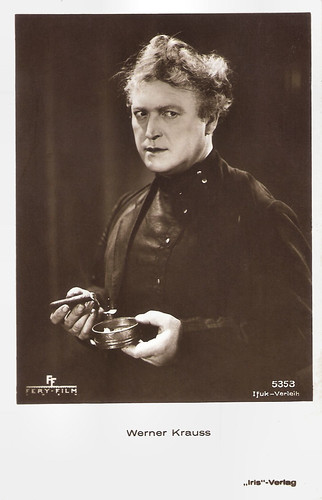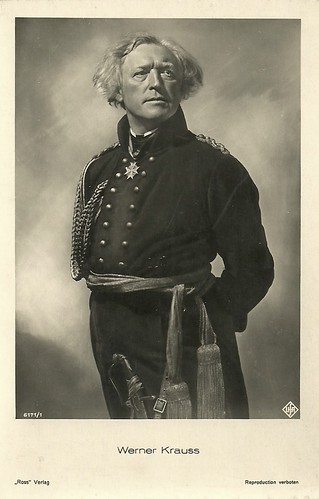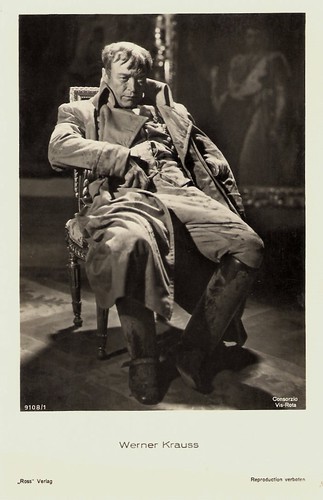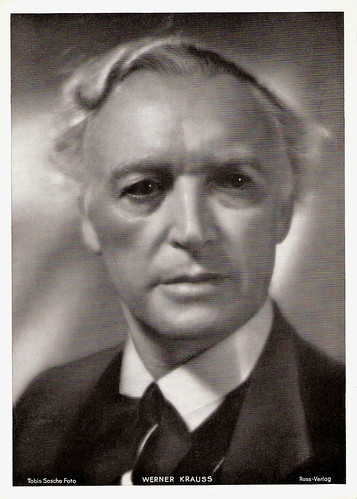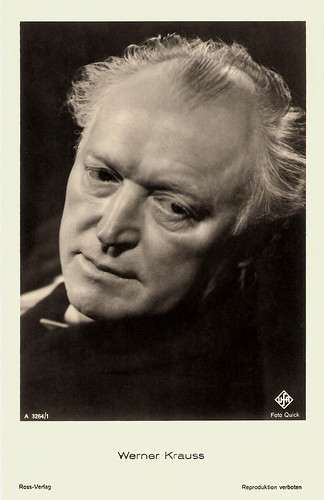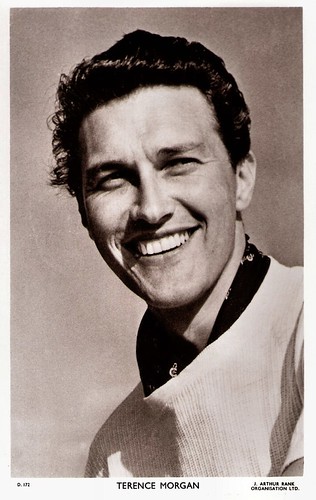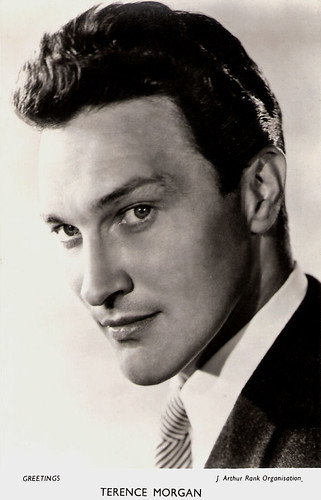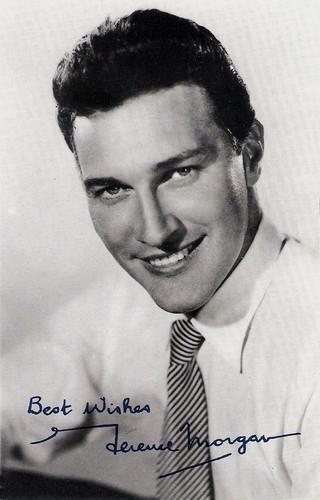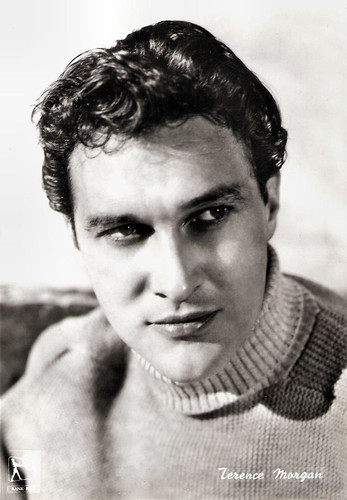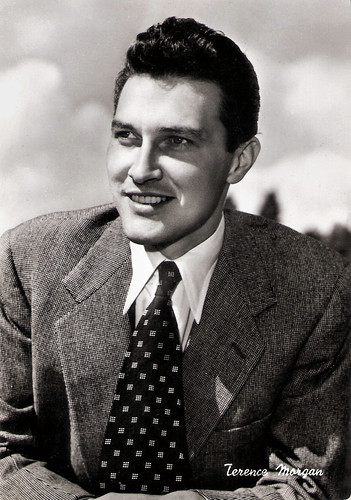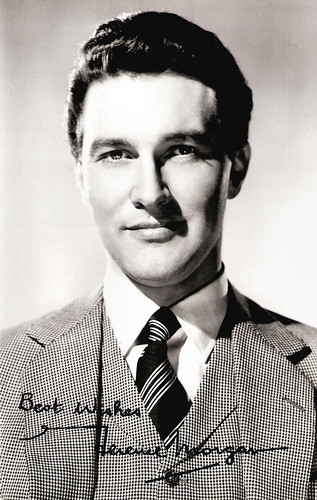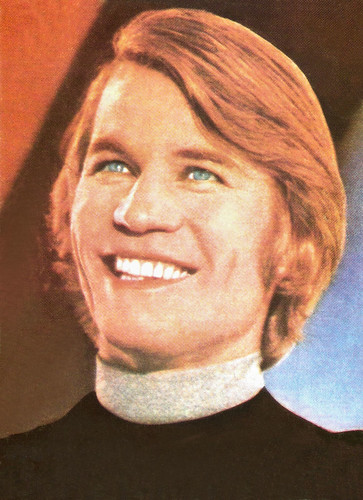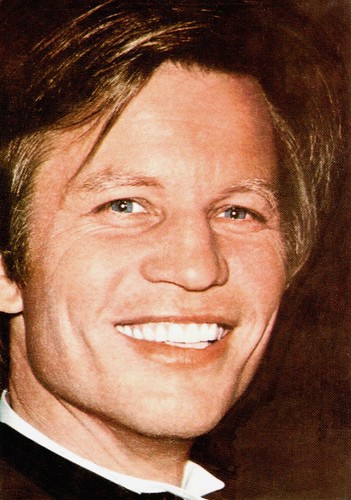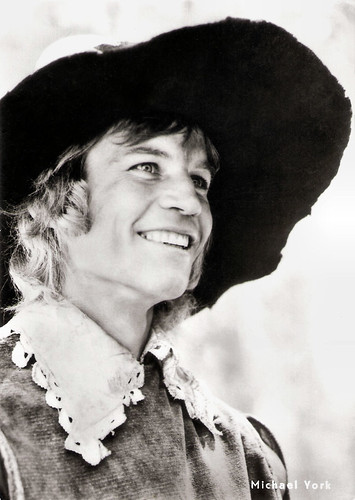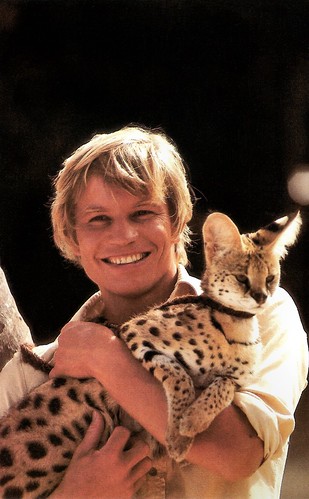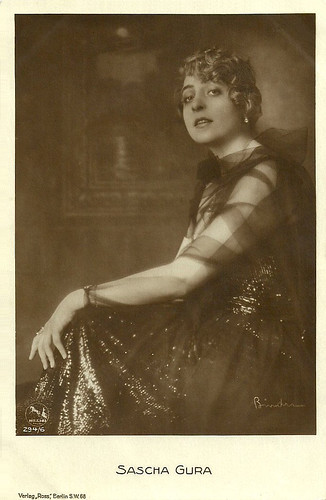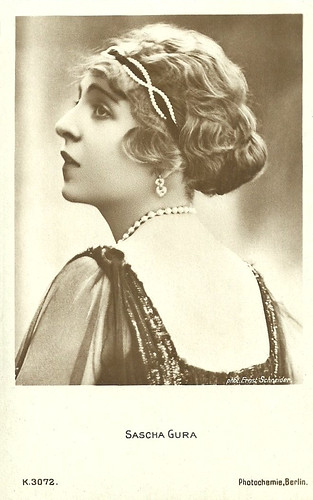2016 was an excellent year for EFSP. For the first time since May 2010, when we started counting, there were more than 90,000 pageviews in one month in July 2016. December 2016 was even better when we passed the magical number of 100,000. This month, January 2017, the party got even busier and Blogger counted more than 120,000 pageviews for EFSP this year already. So thank you, for visiting EFSP! My special thanks go to Ivo, Egbert, Didier, Marlene (check out her latest post about female stars who passed away in 2016 at La Collectionneuse) and the other friends who help and advise. Tomorrow you'll find here a guest post of one of these friends, David Anderson of the blog Bunched Undies and a week later a new guest post by Didier Hanson. Today we remember a wonderful gift of three years ago. When we returned from our holidays in Italy in 2014, there was this little parcel from East-Hartford, USA, waiting for us at our neighbour's house. It contained rare postcards, photos and a clipping on the Ukrainian-born silent film star Xenia Desni and her daughter Tamara Desni, who had an impressive film and stage career herself in Great Britain. The postcards were sent to us by a relative of the Desni's, their niece Tatiana. In the past, Tatiana had already sent us some scans of the postcards of Tamara Desni and now she gave us the 39 Ross Verlag postcards, which she had collected as a little girl. Again, thanks Tatiana!
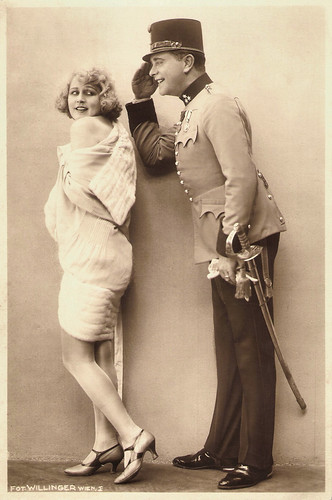
Austrian photo by Willinger, Wien. From Tatiana. Xenia Desni and Livio Pavanelli in the German silent film Die letzte Einquartierung aka Küssen ist keine Sünd'/Kissing is no sin (Rudolf Walther-Fein, Rudolf Dworsky, 1926).

German postcard by Ross Verlag, no. 886/2, 1925-1926. Photo: Decla / Ufa. From Tatiana.
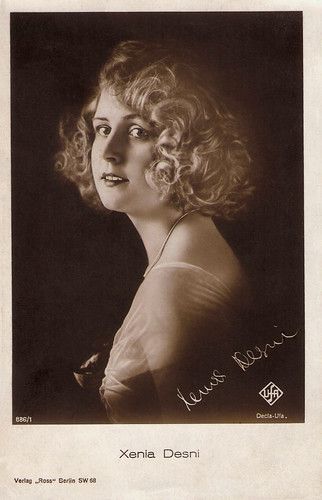
German postcard by Ross Verlag, no. 886/1, 1925-1926. Photo: Decla / Ufa. From Tatiana.
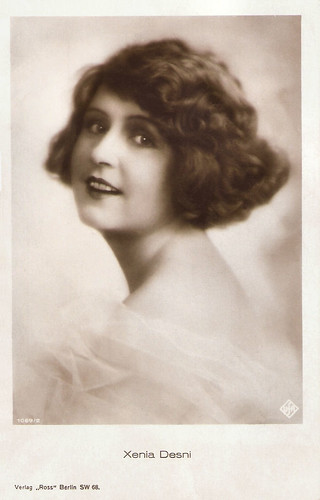
German postcard by Ross Verlag, no. 1069/2, 1927-1928. Photo: Ufa. From Tatiana.
Ukrainian-born actress Xenia Desni (1894-1954) was a star of the German silent cinema. Xenia - also known as Dada - was born in Kiev, but travelled at the beginning of the 1920s to Berlin.
She made her film debut with Sappho (Dimitri Buchowetzki, 1921). She often worked with director Johannes Guter such as for her breakthrough film Die Prinzessin Suwarin/The Princess Suwarin (1923) starring Lil Dagover.
In the next years followed other successful productions such as Die Andere/The Other (Gerhard Lamprecht, 1924). An international hit became the silent operetta Ein Walzertraum/A Waltz Dream (Ludwig Berger, 1925) with Willy Fritsch.
This was followed by Familie Schimeck/The Schimeck Family (Alfred Halm, Rudolf Dworsky, 1926), Madame wagt einen Seitensprung/Madam dares an Escapade (Hans Otto, 1927), and Erzherzog Johann/Archduke John (Max Neufeld, 1929).
After the coming of sound film, her career soon ended. But Xenia helped to shape the film and stage career of her beautiful daughter.
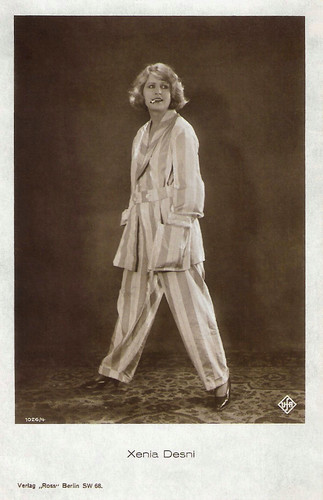
German postcard by Ross Verlag, no. 1026/4, 1927-1928. Photo: Ufa. From Tatiana.

German postcard by Ross Verlag, no. 1028/2, 1927-1928. Photo: Ufa. From Tatiana.
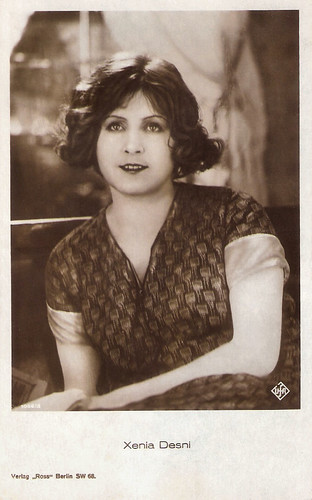
German postcard by Ross Verlag, no. 1026/3, 1927-1928. Photo: Ufa. From Tatiana.

German postcard by Ross Verlag, no. 571/3, 1919-1924. Photo: A. Eberth, Berlin. From Tatiana.
Tamara Desni (1910–2008) started her stage and film career as a child in Berlin. Tamara acted in three German sound films before leaving with her mother to Great Britain.
In 1931, she made her triumphant London stage debut in the operetta White Horse Inn. For this spectacular production, the entire Coliseum theatre was transformed into the Tyrol. The production was based on the German operetta Im weissen Roessl. White Horse Inn was a smash hit and ran for 500 performances at the Coliseum. The production is even credited with saving the theatre, which was faltering as a music hall.
Tamara followed this up with another leading role in a German import at the Coliseum, the musical Casanova, featuring music by Johann Strauss, Jr.
Desni's British film career took off with the comedy Falling for You (Robert Stevenson, Jack Hulbert, 1933), supporting the popular musical comedy team of Jack Hulbert and Cicely Courtneidge.
Later films included the thriller Forbidden Territory (Phil Rosen, 1934), another Jack Hulbert comedy Jack Ahoy (Walter Forde, 1935) and the historical drama Fire Over England (William K. Howard, 1937), with Laurence Olivier and Vivien Leigh.
Tamara Desni’s film career continued through 1950. After that she moved to the South of France, where her bar and restaurant L'Auberge Chez Tamara, became a popular attraction around Grasse in the Alpes Maritimes.
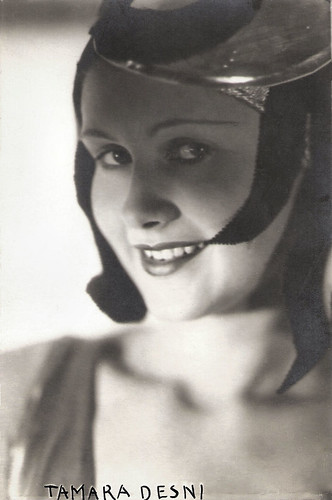
German postcard for Otto Kurt Vogelsang Lichtbildner, Berlin. From Tatiana.
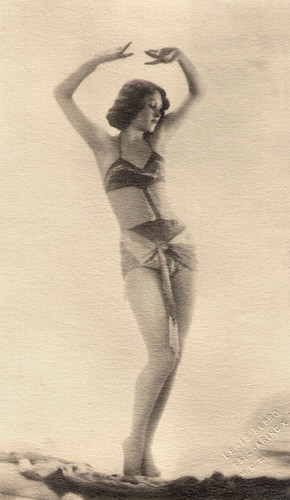
British postcard. From Tatiana.
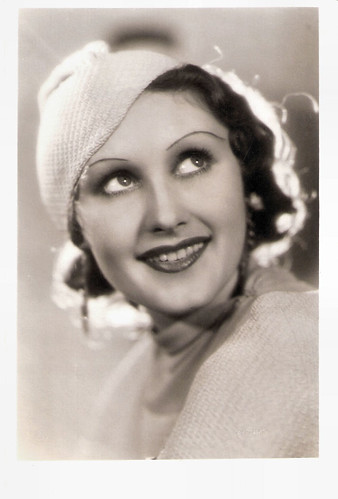
British postcard. From Tatiana.
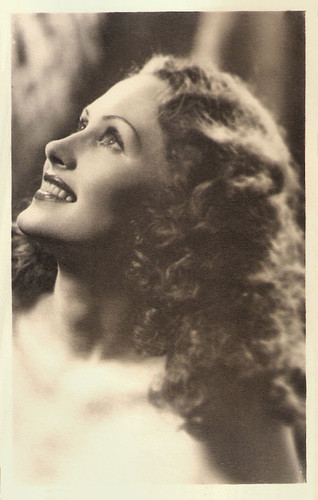
British photo by Vivienne 20th Century Studios Ltd, London. From Tatiana.
NB. For the number fetishists among us: Blogger counted 126,864 page views for EFSP in January 2017.

Austrian photo by Willinger, Wien. From Tatiana. Xenia Desni and Livio Pavanelli in the German silent film Die letzte Einquartierung aka Küssen ist keine Sünd'/Kissing is no sin (Rudolf Walther-Fein, Rudolf Dworsky, 1926).

German postcard by Ross Verlag, no. 886/2, 1925-1926. Photo: Decla / Ufa. From Tatiana.

German postcard by Ross Verlag, no. 886/1, 1925-1926. Photo: Decla / Ufa. From Tatiana.

German postcard by Ross Verlag, no. 1069/2, 1927-1928. Photo: Ufa. From Tatiana.
Xenia Desni
Ukrainian-born actress Xenia Desni (1894-1954) was a star of the German silent cinema. Xenia - also known as Dada - was born in Kiev, but travelled at the beginning of the 1920s to Berlin.
She made her film debut with Sappho (Dimitri Buchowetzki, 1921). She often worked with director Johannes Guter such as for her breakthrough film Die Prinzessin Suwarin/The Princess Suwarin (1923) starring Lil Dagover.
In the next years followed other successful productions such as Die Andere/The Other (Gerhard Lamprecht, 1924). An international hit became the silent operetta Ein Walzertraum/A Waltz Dream (Ludwig Berger, 1925) with Willy Fritsch.
This was followed by Familie Schimeck/The Schimeck Family (Alfred Halm, Rudolf Dworsky, 1926), Madame wagt einen Seitensprung/Madam dares an Escapade (Hans Otto, 1927), and Erzherzog Johann/Archduke John (Max Neufeld, 1929).
After the coming of sound film, her career soon ended. But Xenia helped to shape the film and stage career of her beautiful daughter.

German postcard by Ross Verlag, no. 1026/4, 1927-1928. Photo: Ufa. From Tatiana.

German postcard by Ross Verlag, no. 1028/2, 1927-1928. Photo: Ufa. From Tatiana.

German postcard by Ross Verlag, no. 1026/3, 1927-1928. Photo: Ufa. From Tatiana.

German postcard by Ross Verlag, no. 571/3, 1919-1924. Photo: A. Eberth, Berlin. From Tatiana.
Tamara Desni
Tamara Desni (1910–2008) started her stage and film career as a child in Berlin. Tamara acted in three German sound films before leaving with her mother to Great Britain.
In 1931, she made her triumphant London stage debut in the operetta White Horse Inn. For this spectacular production, the entire Coliseum theatre was transformed into the Tyrol. The production was based on the German operetta Im weissen Roessl. White Horse Inn was a smash hit and ran for 500 performances at the Coliseum. The production is even credited with saving the theatre, which was faltering as a music hall.
Tamara followed this up with another leading role in a German import at the Coliseum, the musical Casanova, featuring music by Johann Strauss, Jr.
Desni's British film career took off with the comedy Falling for You (Robert Stevenson, Jack Hulbert, 1933), supporting the popular musical comedy team of Jack Hulbert and Cicely Courtneidge.
Later films included the thriller Forbidden Territory (Phil Rosen, 1934), another Jack Hulbert comedy Jack Ahoy (Walter Forde, 1935) and the historical drama Fire Over England (William K. Howard, 1937), with Laurence Olivier and Vivien Leigh.
Tamara Desni’s film career continued through 1950. After that she moved to the South of France, where her bar and restaurant L'Auberge Chez Tamara, became a popular attraction around Grasse in the Alpes Maritimes.

German postcard for Otto Kurt Vogelsang Lichtbildner, Berlin. From Tatiana.

British postcard. From Tatiana.

British postcard. From Tatiana.

British photo by Vivienne 20th Century Studios Ltd, London. From Tatiana.
NB. For the number fetishists among us: Blogger counted 126,864 page views for EFSP in January 2017.
